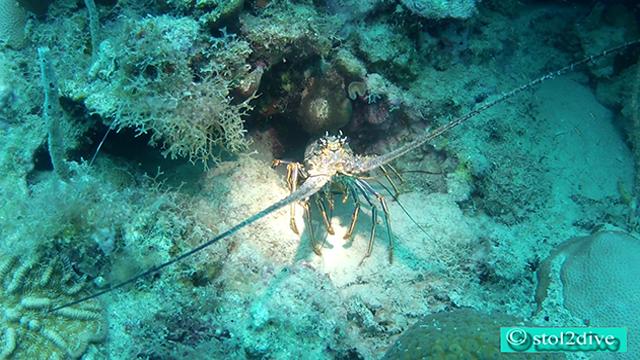SPINNY LOBSTER
Lobsters are found in all tropical and temperate seas. Generally gregarious (as can be seen in the video below left), rather sedentary and nocturnal, the lobster makes only short trips to feed or reproduce. In addition to camouflage, thanks to its homochromy and immobility, it is protected by its shell. During moults during which its shell becomes temporarily more flexible and soft to get rid of it, the lobster becomes a prey sought by predators such as conger or moray eel. She can defend herself by making sudden jumps backwards, thanks to contractions of her abdomen.
Caribbean spiny lobsters (Panulirus argus) grow to about 60 cm in length. Like the other 20 members of the genus Panulirus, such as Mediterranean or Moroccan lobsters (Panulirus elephas), they lack the large pinching claws of their Maine lobster relatives. Their primary defense are the spines that cover its shell, which help protect them from predators. Caribbean spiny lobsters use a second pair of antennae in sensory perception, which are found folded along side their body when it's not in use. These lobsters have a striped body, brown-gray in color with yellow spots on the segmented tail. They also have compound eyes and can detect orientation, form, light, and color.

Spinny lobsters at SABA Island
Caribbean lobster is very common in the Atlantic tropical waters, from North Carolina to Brazil. It lives under rocks or crevices of coral reefs. As you will see in the second half of this video shot in June 2013 next to the island of Saba (to see where this island is located go here), she often shares her hole with other lobsters. Below many coral reefs of the island of Saba, we can often see these lobsters like those you can see on the video above, all filmed in June 2013.

